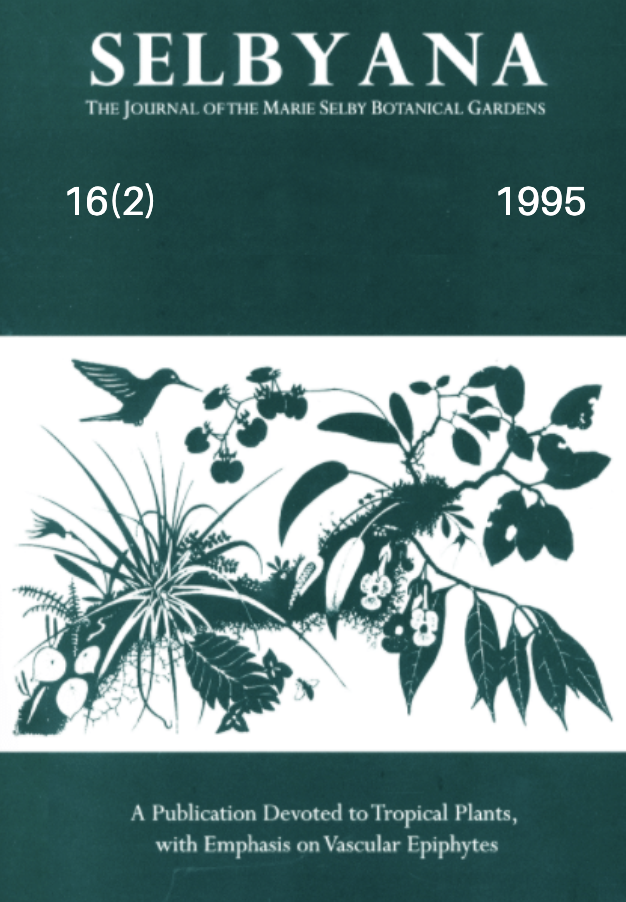Abstract
We describe a study involving simultaneous measurements of sap flow rate and sap nutrient content in three canopy and four sub-canopy trees of Dryobalanops aromatica Gaertn. f. (Dipterocarpaceae). Sap flow rate was measured using a heat pulse technique. Sap nutrient content was determined for potassium, calcium, total Kjeldahl nitrogen and phosphorus from samples collected diurnally in the tree crowns. Sap concentration for all nutrients at each 2-h sampling period was unrelated to tree size, except for during the 1600-1800 h period. Relative concentrations of the four nutrients followed the general pattern of N > K > Ca > P; greatest rates of delivery (mmol h⁻¹) to tree crowns tended to occur at mid-day for each of the four nutrients. Distinct diurnal patterns of sap flow and nutrient content were apparent in most trees. Sap nutrient concentration was often positively correlated with the rate of sap flow. We discuss possible explanations for this unexpected correlation in terms of within-tree nutrient cycling, and also the postulated osmotic role of xylem sap solutes. We conclude that combining measurements of sap flow and sap nutrient content, a technique apparently not previously used in a tropical rain forest study, has considerable potential in ecophysiology.
Open Access and Copyright Notice
Selbyana is committed to real and immediate open access for academic work. All of Selbyana's articles and reviews are free to access immediately upon publication. There are no author charges (APCs) prior to publication, and no charges for readers to download articles and reviews for their own scholarly use. To facilitate this, Selbyana depends on the financial backing of the Marie Selby Botanical Gardens, the hard work and dedication of its editorial team and advisory board, and the continuing support of its network of peer reviewers and partner institutions.
Authors are free to choose which open license they would like to use for their work. Our default license is the Creative Commons Attribution-NonCommercial 4.0 (CC BY-NC 4.0). While Selbyana’s articles can be copied by anyone for noncommercial purposes if proper credit is given, all materials are published under an open-access license with authors retaining full and permanent ownership of their work. The author grants Selbyana a perpetual, non-exclusive right to publish the work and to include it in other aggregations and indexes to achieve broader impact and visibility.
Authors are responsible for and required to ascertain that they are in possession of image rights for any and all photographs, illustrations, and figures included in their work or to obtain publication or reproduction rights from the rights holders. Contents of the journal will be registered with the Directory of Open Access Journals and similar repositories. Authors are encouraged to store their work elsewhere, for instance in institutional repositories or personal websites, including commercial sites such as academia.edu, to increase circulation (see The Effects of Open Access).
